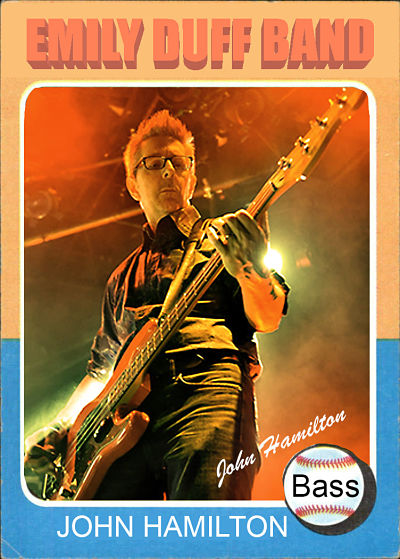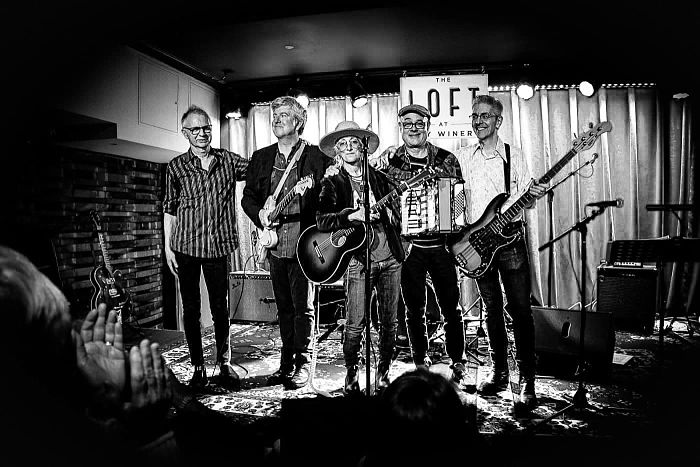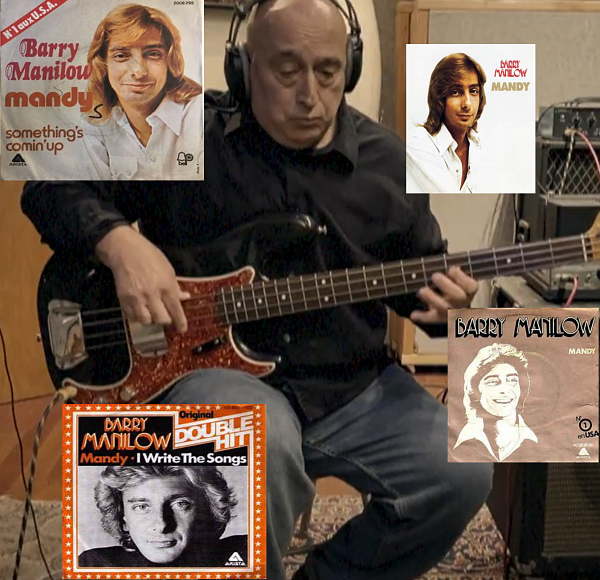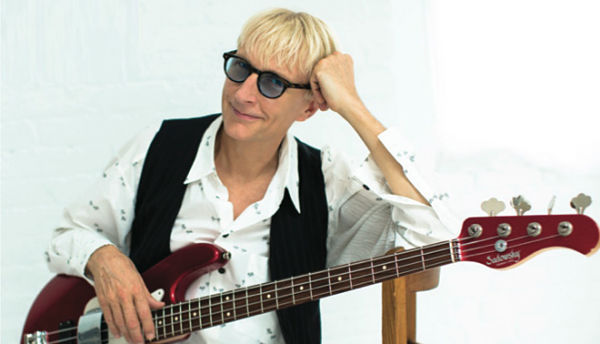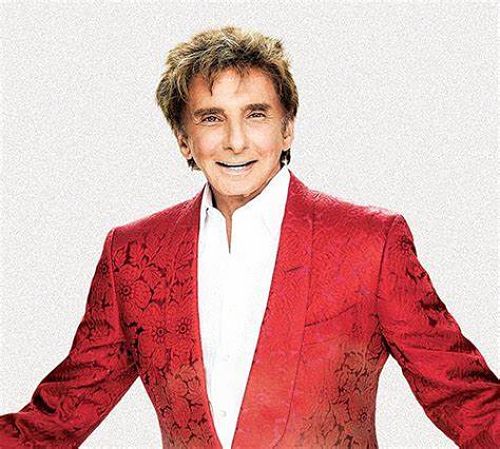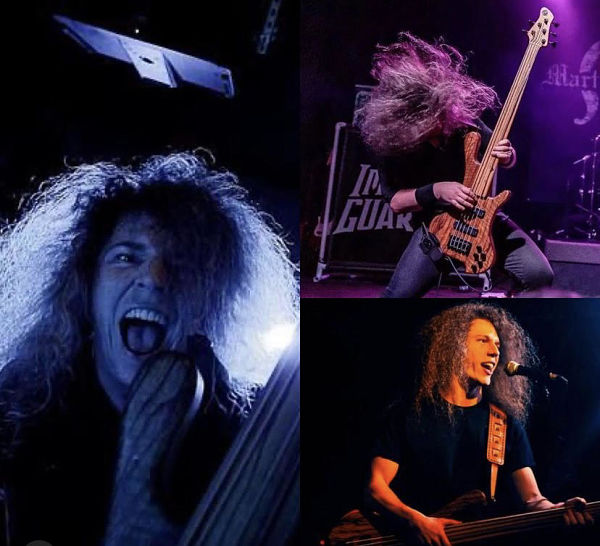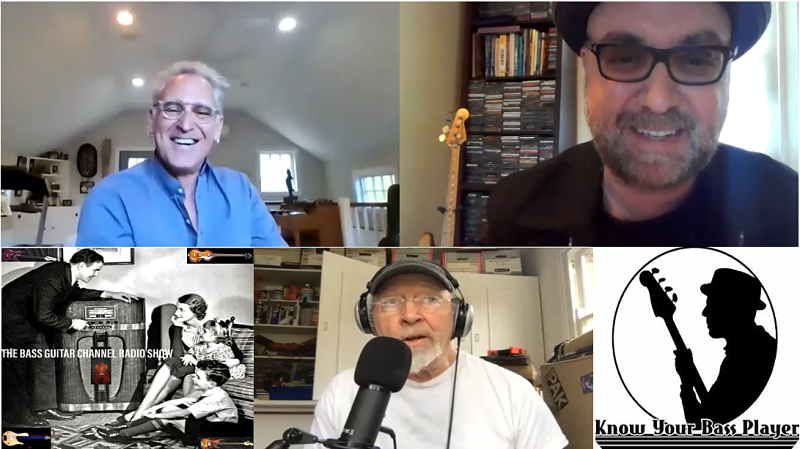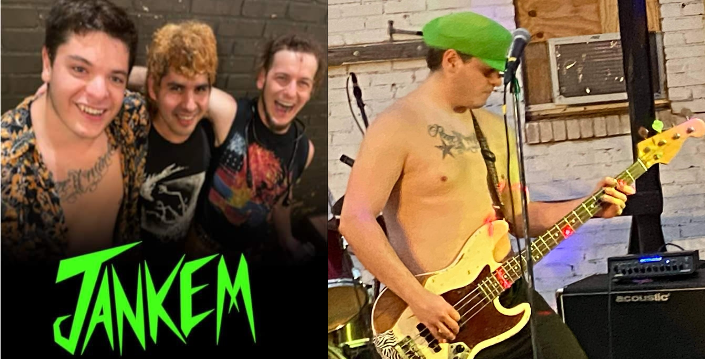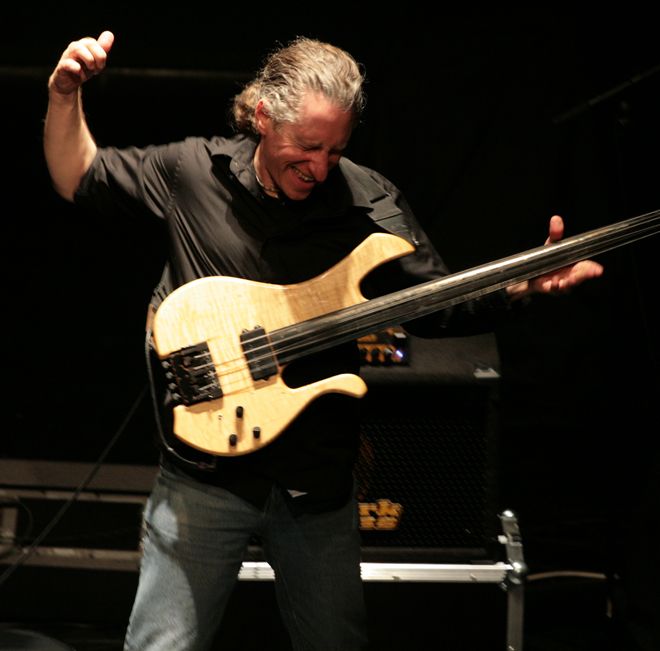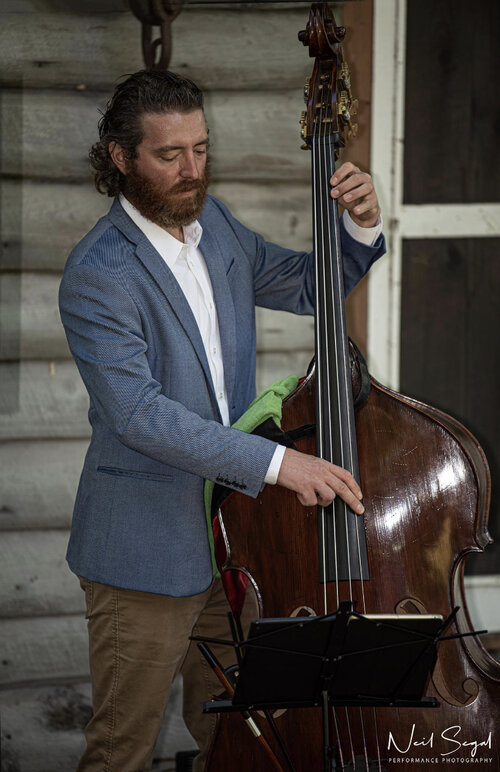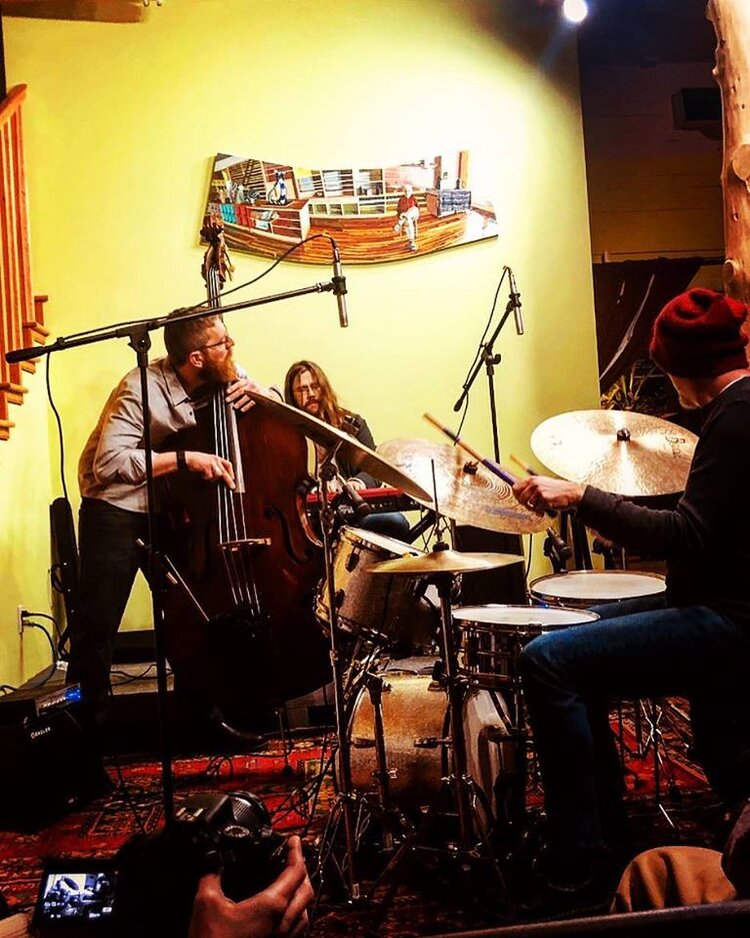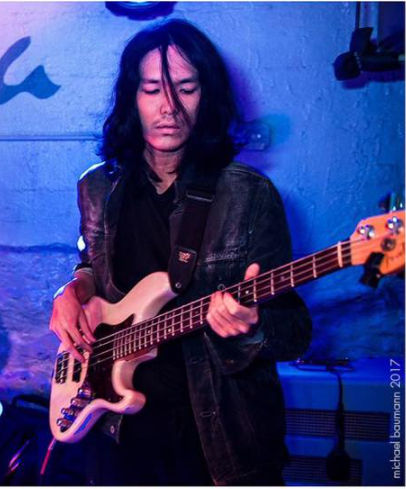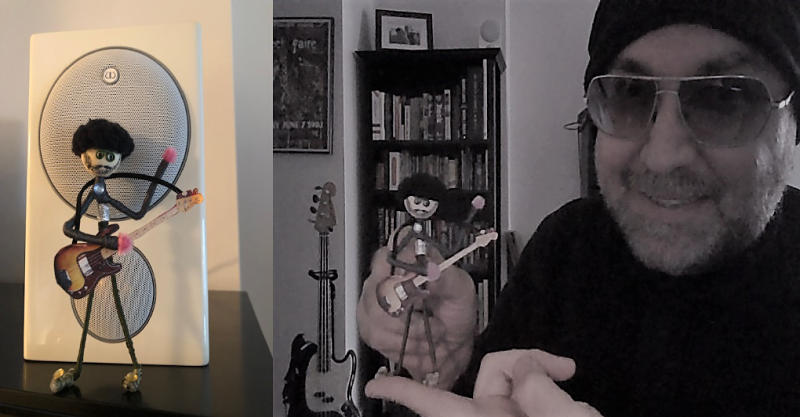
Conceived, created, and gestated by Dr. Patricia Arean, this bass playing miniature replica of Know Your Bass Player “honcho” and Notes From An Artist radio / podcast host Tom Semioli traverses landmark locales in New York City….
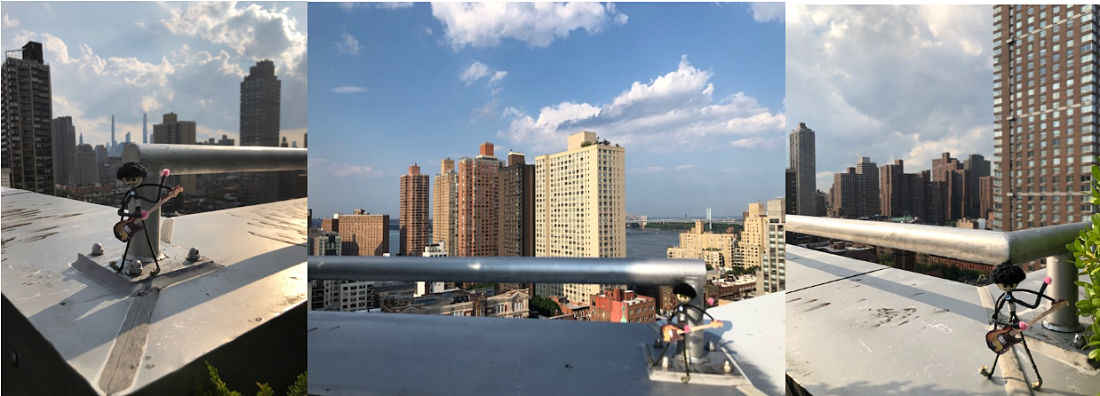
Rooftop hang on the #UpperEastSide of #Manhattan…. #trailguardian #bass #bassplayer #FenderBass #FenderPrecisionBass #BassGuitar #NewYorkCity #NewYorkCityBassPlayer @trail_guardians @patjisan #NewYorker #StayingPutInNYC

“Twenty, twenty, twenty, twenty-four hours to go, I wanna be sedated, Nothing to do nowhere to go, oh I wanna be sedated…” #LowerEastSide #JoeyRamone Place #Bowery & 2nd Street #NYC #trailguardian #bass #bassplayer #FenderBass #FenderPrecisionBass #BassGuitar #NewYorkCity #NewYorkCityBassPlayer @trail_guardians @patjisan #NewYorker #stayingputinNYC #TheRamones #NewYorkCityRock #punkrock
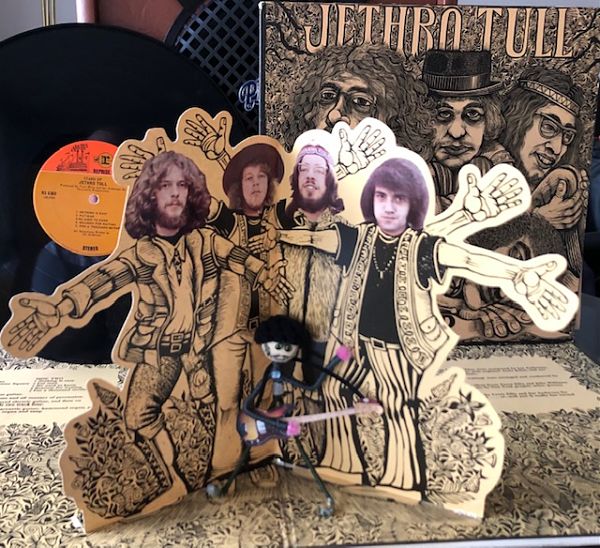
“Happy and I’m smilin’ walk a mile to drink your water….” Standing Up with #IanAnderson #MartinBarre #GlennCornick #CliveBunker #JethroTull #NYC #trailguardian #bass #bassplayer #FenderBass #FenderPrecisionBass #BassGuitar #NewYorkCity #NewYorkCityBassPlayer @trail_guardians @patjisan #NewYorker #stayingputinNYC
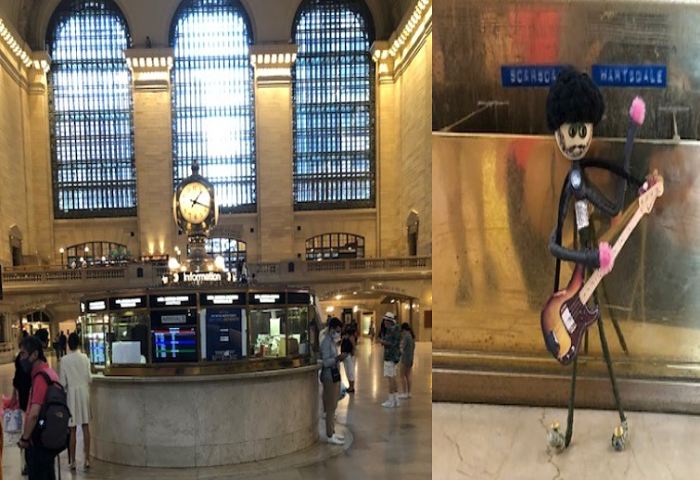
#GrandCentralStation #NYC #trailguardian #bass #bassplayer #FenderBass #FenderPrecisionBass #BassGuitar #NewYorkCity #NewYorkCityBassPlayer @trail_guardians @patjisan #NYTransit #MTA #NYSubway #NewYorker #StayingPutInNYC
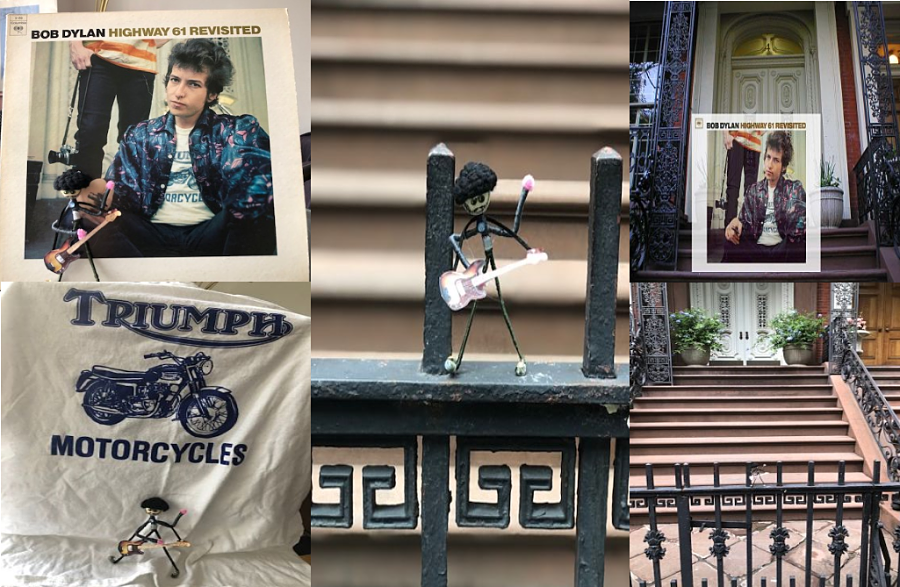
“Once upon a time you dressed so fine, Threw the bums a dime in your prime, didn’t you?” Hangin’ at 4 Gramercy Park West in #NewYorkCity – the cover image locale of #BobDylan #Highway61Revisited 1965 #trailguardian #bass #bassplayer #FenderBass #FenderPrecisionBass #BassGuitar #NewYorkCityBassPlayer @trail_guardians @patjisan #NewYorker #StayingPutInNYC
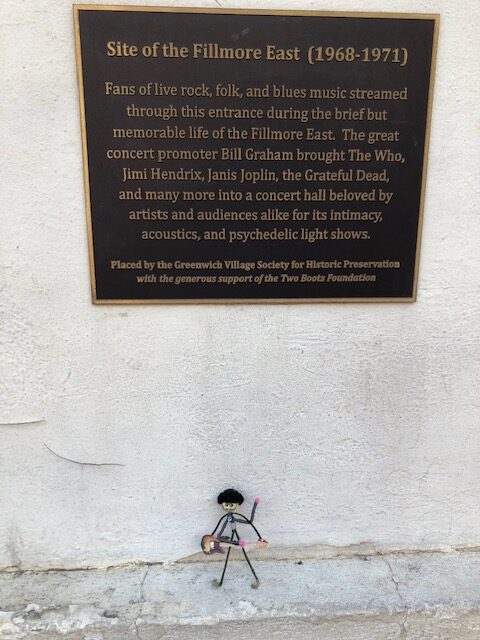
Hangin’ on the 50th Anniversary of the last concert at Bill Graham’s #FillmoreEast 27 June 1971 #trailguardian #bass #bassplayer #FenderBass #FenderPrecisionBass #BassGuitar #NewYorkCity #NewYorkCityBassPlayer @trail_guardians @patjisan #NewYorker #stayingputinNYC #NewYorkCityRock #NewYorkCityLandmark #SanFranciscoRock #FillmoreWest #AllmanBrothers #JGeilsBand #AlbertCollins
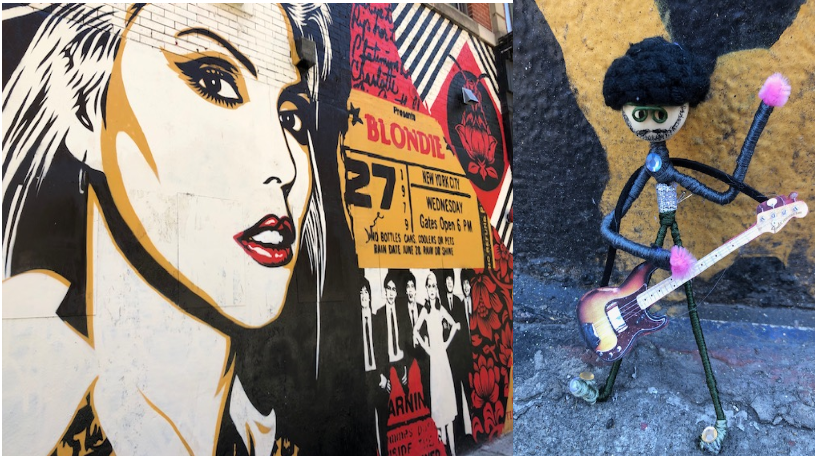
“Once I had a love and it was a gas, Soon turned out had a heart of glass …”#DebbieHarry #Blondie Mural at #BleeckerStreet & #Bowery #NYC #trailguardian #bass #bassplayer #FenderBass #FenderPrecisionBass #BassGuitar #NewYorkCity #NewYorkCityBassPlayer @trail_guardians @patjisan #NewYorker #stayingputinNYC #NewWaveRock #NewYorkCityRock #punkrock
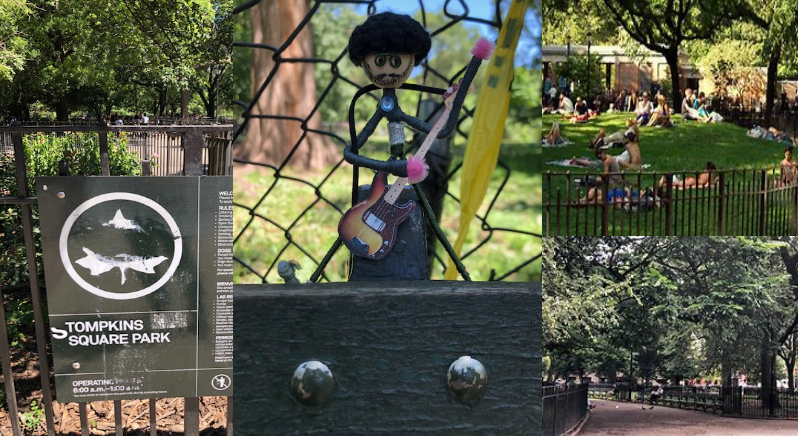
#TompkinsSquarePark #LowerEastSide #EastVillage #bass #bassplayer #FenderBass #FenderPrecisionBass #BassGuitar #NewYorkCity #NewYorkCityBassPlayer @trail_guardians @patjisan #NewYorker #stayingputinNYC
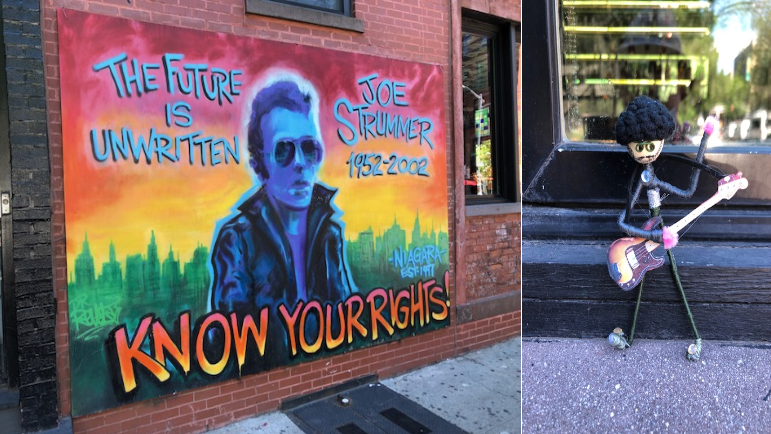
“The magnificent seven… Ring! Ring! It’s 7 A.M.! Move y’self to go again…” Hangin’ at the #JoeStrummer mural on the #LowerEastSide of #NYC at #NiagraBar adjacent to #TompkinsSquarePark! #trailguardian #bass #bassplayer #FenderBass #FenderPrecisionBass #BassGuitar #NewYorkCity #NewYorkCityBassPlayer @trail_guardians @patjisan #NewYorker #stayingputinNYC #NewYorkCityRock #punkrock #TheClash
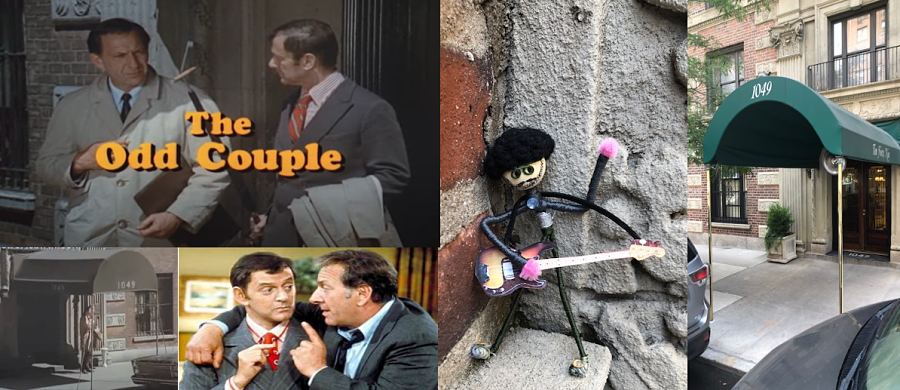
“Felix Unger was asked to remove himself from his place of residence; that request came from his wife. Deep down, he knew she was right, but he also knew that someday he would return to her. With nowhere else to go, he appeared at the home of his friend, Oscar Madison. Several years earlier, Madison’s wife had thrown HIM out, requesting that HE never return. Can two divorced men share an apartment without driving each other crazy?” Hangin’ at 1049 Park Avenue, #UpperEastSide #NYC Site of opening credits and “home” to Oscar Madison and Felix Unger 1970-75 #OddCouple #NeilSimon #TonyRandall #JackKlugman #Broadway #NewYorkTheater #trailguardian #bass #bassplayer #FenderBass #FenderPrecisionBass #BassGuitar #NewYorkCity #NewYorkCityBassPlayer @trail_guardians @patjisan #NewYorker #StayingPutInNYC

“Tom, get your plane right on time, I know your part’ll go fine. Doh-n-doh-de-doh-n-doh. And here I am, the only living boy in New York… Hangin’ on the east end of The #CentralParkReservoir (since renamed for Jackie O.) at the precise locale of #SimonandGarfunkel album image for their first Greatest Hits collection. #PaulSimon #ArtGarfunkel #bass #bassplayer #FenderBass #FenderPrecisionBass #BassGuitar #NewYorkCity #NewYorkCityBassPlayer @trail_guardians @patjisan #NewYorker #stayingputinNYC Feelin’ groovy?
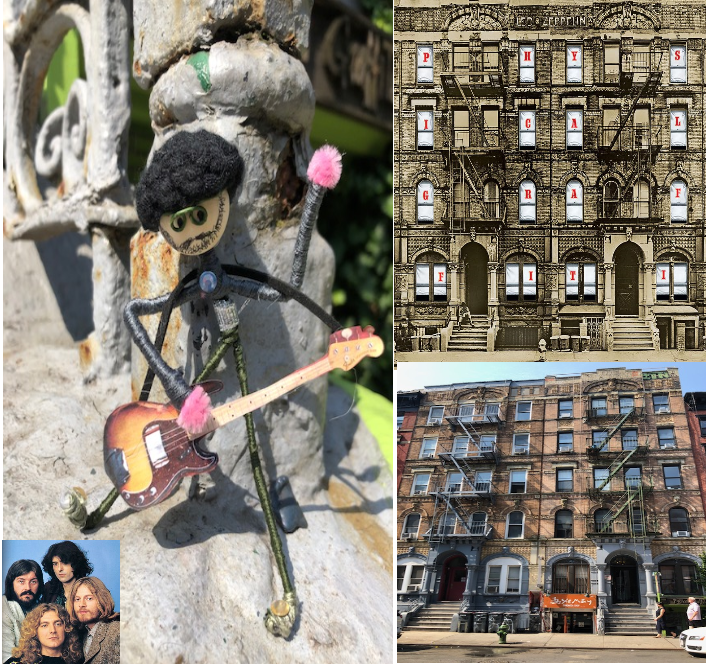
“Let me take you to the movie.. Can I take you to the show? Let me be yours ever truly…Can I make your garden grow?” Hangin’ at 96-98 St. Mark’s Place, #LowerEastSide #NewYorkCity site #LedZeppelin #PhysicalGraffiti album cover #JimmyPage #JohnPaulJones #JohnBonham #RobertPlant #bass #bassplayer #FenderBass #FenderPrecisionBass #BassGuitar #NewYorkCity #NewYorkCityBassPlayer @trail_guardians @patjisan #NewYorker #stayingputinNYC #StMarksPlace
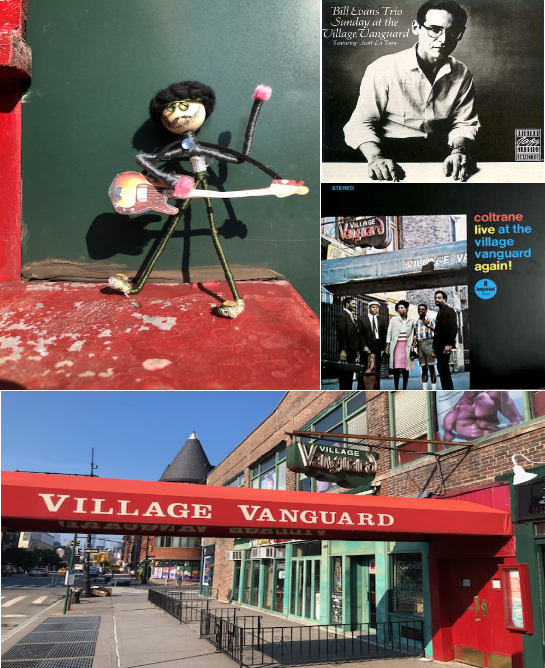
Hangin’ at the #VillageVanguard #GreenwichVillage #NewYorkCityJazz #JohnColtrane #BillEvans #ScottLaFaro #PaulMotian #NewYorkCityLandmark #bass #bassplayer #FenderBass #FenderPrecisionBass #BassGuitar #NewYorkCity #NewYorkCityBassPlayer @trail_guardians @patjisan #NewYorker #stayingputinNYC
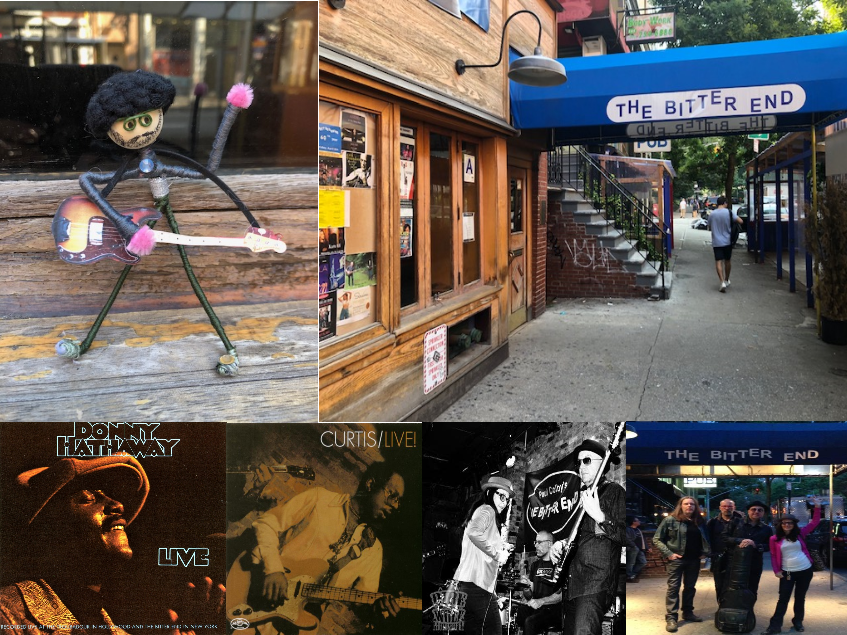
“I hear voices, I see people I hear voices of many people, everything is everything…” Hangin’ at the legendary #BitterEnd #folkrock #DonnyHathaway #CurtisMayfield #bass #bassplayer #FenderBass #FenderPrecisionBass #BassGuitar #NewYorkCity #NewYorkCityBassPlayer @trail_guardians @patjisan #NewYorker #stayingputinNYC “Hush now child and don’t you cry, your folks might understand you by and by, just move on up towards your destination, though you may find from time-to-time complications….”
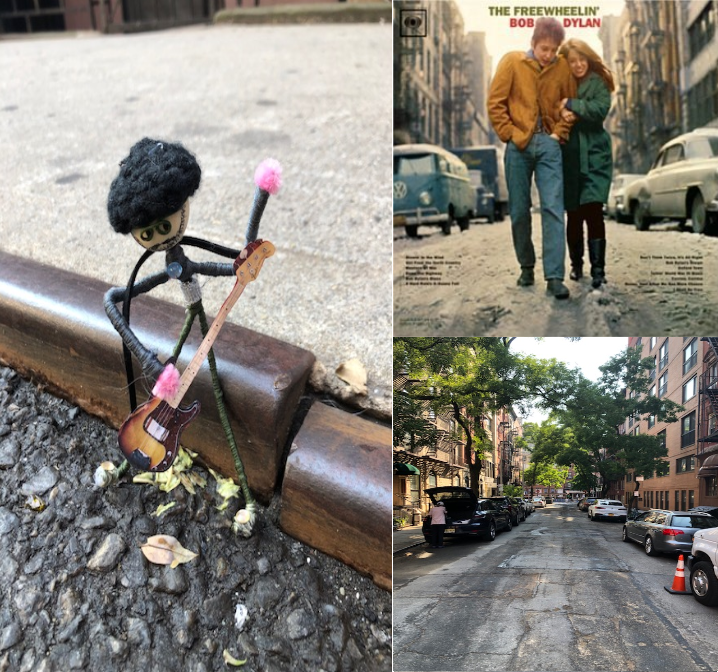
“I’ve stumbled on the side of twelve misty mountains, I’ve walked and I’ve crawled on six crooked highways …” Positively West 4th and Jones Street in #GreenwichVillage, site of #BobDylan Freewheelin’ (1963) album image #bass #bassplayer #FenderBass #FenderPrecisionBass #BassGuitar #folkrock #NewYorkCity #NewYorkCityBassPlayer @trail_guardians @patjisan #NewYorker #stayingputinNYC
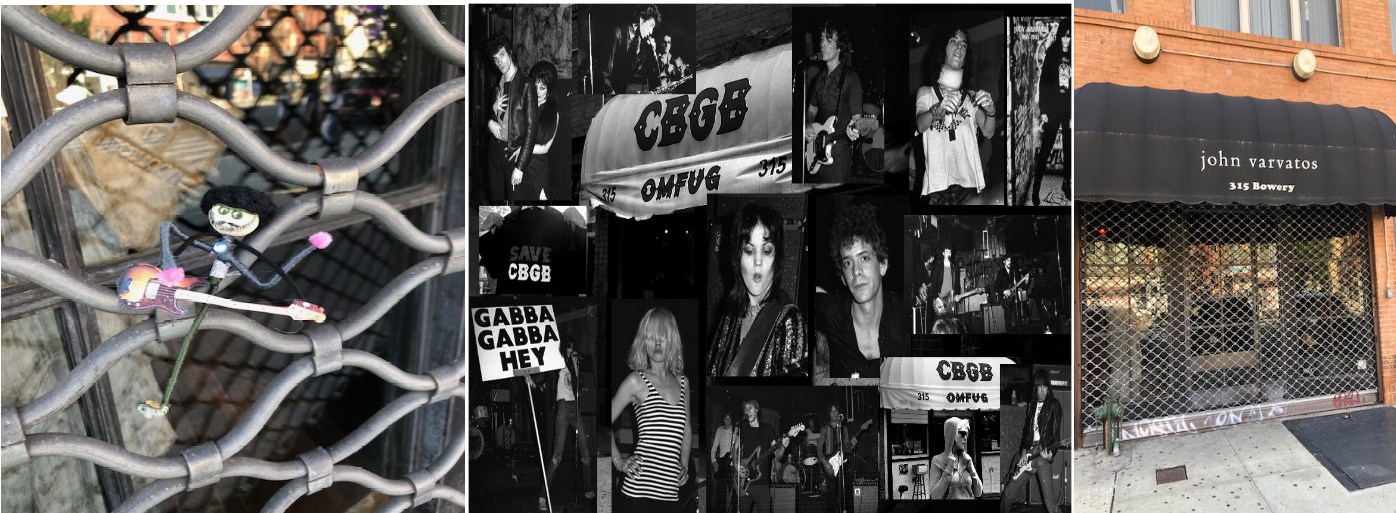
“A hustle here and a hustle there, New York City’s the place where they said, ‘hey, babe, take a walk on the wild side…” What was once #CBGB at 315 #Bowery #punkrock #TheRamones #Blondie #LouReed #Television #PattiSmith #JohnVarvatos #RichardHell #IggyPop #bass #bassplayer #FenderBass #FenderPrecisionBass #BassGuitar #NewYorkCity #NewYorkCityBassPlayer @trail_guardians @patjisan #NewYorker #stayingputinNYC
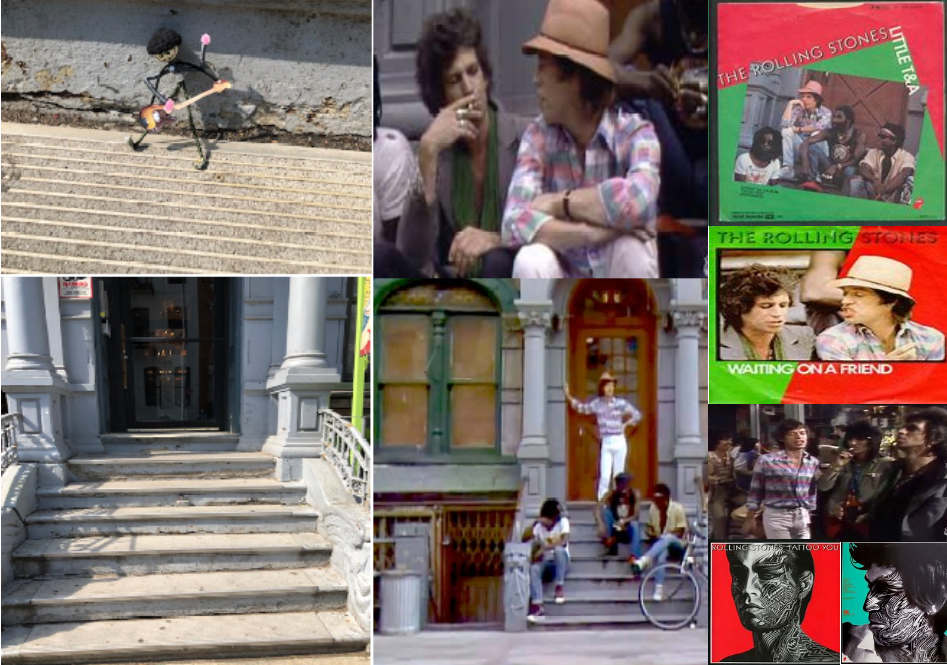
“…a smile relieves a heart that grieves, remember what I said, I’m not waiting on a lady, I’m just waiting on a friend…” Hangin’ at 96-98 St. Mark’s Place, #LowerEastSide #NewYorkCity – site of #RollingStones video “Waiting on a Friend” #MickJagger #KeithRichards #BillWyman #CharlieWatts #RonWood #bass #bassplayer #FenderBass #FenderPrecisionBass #BassGuitar #NewYorkCity #NewYorkCityBassPlayer @trail_guardians @patjisan #NewYorker #stayingputinNYC #StMarksPlace
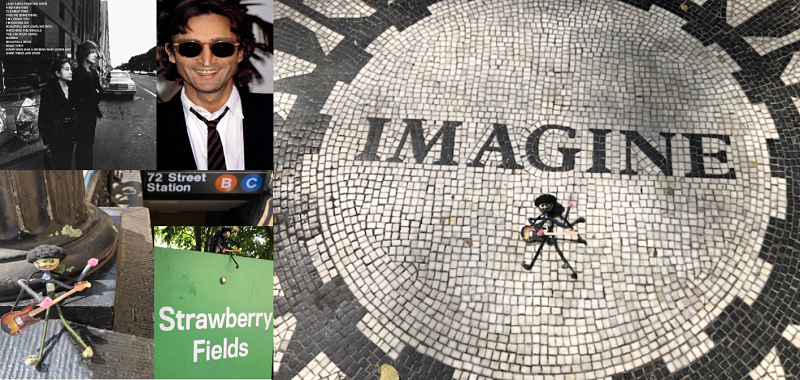
“I’m just sittin’ here watching the wheels go ‘round and ‘round, I really love to watch them roll…” Hangin’ at #StrawberryFields and The Dakota, home of #JohnLennon in #NYC #CentralParkWest #TheBeatles #GeorgeHarrison #PaulMcCartney #RingoStarr #YokoOno #bass #bassplayer #FenderBass #FenderPrecisionBass #BassGuitar #NewYorkCity #NewYorkCityBassPlayer @trail_guardians @patsjisan #NewYorker #StayingPutInNYC
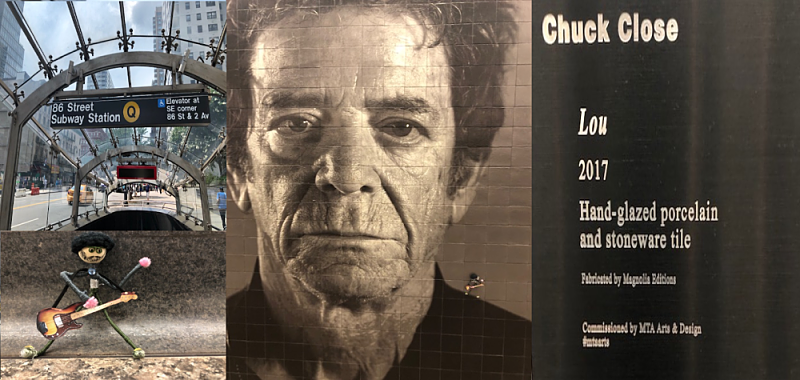
“I’ll be your mirror reflect what you are, in case you don’t know, I’ll be the wind, the rain and the sunset, the light on your door to show that you’re home…” Hangin’ with #LouReed at the #East86thStreet #NYCSubway station. #ChuckClose #NYCsubwayart #NYCarts #VelvetUnderground #JohnCale #NewYorkRock #RockHall #bass #bassplayer #FenderBass #FenderPrecisionBass #BassGuitar #NewYorkCity #NewYorkCityBassPlayer @trail_guardians @patsjisan #NewYorker #StayingPutInNYC
